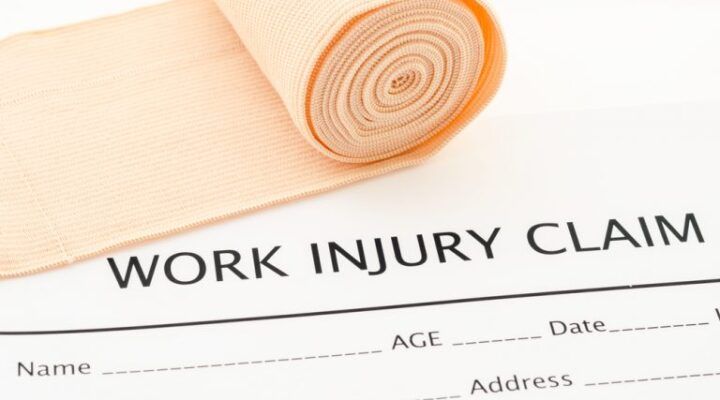Nursing is one of the most difficult and demanding professions in the world. It is also one of the most important. Nurses confront life and death situations on a daily basis.
Nurses work with Doctors who are some of the brightest and most difficult individuals on the planet. These Doctors have demanding schedules and responsibilities which impact on their ability to work with others.
Nurses work with other Nurses who are confronted with the same stressors and responsibilities. At times, they can be in conflict with each other.
Nurses also work with patients who may have emotional issues that are either pre-existing or are relating to their medical problem at issue. Also, they may have anger issues relating to their perceived mistreatment at the facility. Nurses also work with patient’s family members who are emotionally involved with the patient’s well- being. They too may be upset at their perceived mistreatment of their beloved family member.
Nurses finally work with medical institutions which have rules and regulations that they need to be in compliance with concerning their operations.
With respect to these numerous interactions, some of these interactions have been viewed as unacceptable and have been labeled as “bullying.”
“Nurse Bullying” has been subject o was subject to a study which found interesting results. This article will discuss the nature of nurse bullying, how nurse bullying should be analyzed within a workers’ compensation setting, and what a nurse should do if they are subjected to stress.
Even If I am not a Nurse, Why Should I Be Concerned about Nurse Bullying?
“Workplace bullying has also been acknowledged as a threat to patient outcomes and the delivery of quality of patient care, as well as the erosion of personal health and professional wellbeing [9, 13, 14]. Excellence in patient care flourishes in an environment built on open communication and respectful professional relationships. An environment that condones bullying perpetrates destruction of professional communication.” Gaffney DA, Demarco RF, Hofmeyer A, Vessey JA, Budin WC. Making things right: nurses’ experiences with workplace bullying-a grounded theory. Nurs Res Pract. 2012;2012:243210. doi:10.1155/2012/243210
What Is Bullying in the Nursing Profession?
Individuals studying bullying characterized the situation as on in which there is a power imbalance. These interactions can have serious effects on the organization. Yoo, S.Y.; Ahn, H.Y. Nurses’ Workplace Bullying Experiences, Responses, and Ways of Coping. Int. J. Environ. Res. Public Health 2020, 17, 7052.
Who Was Responsible for the Bullying?
In the study, there are many types of bullying offenders, including patients, caregivers, doctors, and nurses. Of these, bullying most frequently occurs among nurses and is particularly committed by a colleague rather than by a manager. Yoo, S.Y.; Ahn, H.Y. Nurses’ Workplace Bullying Experiences, Responses, and Ways of Coping. Int. J. Environ. Res. Public Health 2020, 17, 7052.
Note: for workers’ compensation purposes, the employment position of the offender is very important
Bullying has also been defined in other studies.
“Bullying goes by many names: workplace aggression, indirection aggression, social or relational aggression, horizontal (lateral) violence, and workplace violence. It has become so popularized in the press; bullying is often, mistakenly, used as an overarching concept. There is a tendency to use many of these terms interchangeably [8]. Bullying is different from horizontal violence in that a real or perceived power differential between the instigator and recipient must be present [15]. Some of the most recent literature suggests that all of these behaviors exist on a conceptual continuum of workplace victimization [3].” Gaffney DA, Demarco RF, Hofmeyer A, Vessey JA, Budin WC. Making things right: nurses’ experiences with workplace bullying-a grounded theory. Nurs Res Pract. 2012;2012:243210. doi:10.1155/2012/243210
Is Bullying the Same as Job Stress?
Those researching this have distinguished it from ordinary job stress. It is something different from the day to day social stresses or poor management.
What Types of Bullying are Going on?
Bullying has been described in situations where the nurse is new to the area, in situations where the nurse witnesses mistreatment of others, in situations in which they are singled out for public censure or humiliation, in situation in which there are constantly being interrupted, situations in which they are not in the social clique and they are subject to juvenile-like behavior, situations in which they feel they are being punished with disciplinary action or threats, Gaffney DA, Demarco RF, Hofmeyer A, Vessey JA, Budin WC. Making things right: nurses’ experiences with workplace bullying-a grounded theory. Nurs Res Pract. 2012;2012:243210. doi:10.1155/2012/243210
What are the Consequences of Bullying?
Nurses being subjected to bullying is a societal concern. If this bullying impacts patient medical treatment, it must be addressed in those terms in addition to the health concerns of the Nurse effected.
It is reported that “[n]urses bullied at the workplace may complain of mental symptoms, such as depression, anxiety, and fear, as well as physical symptoms, such as fatigue, headaches, and palpitations. They are also more susceptible to burnout and turnover intention and have lower levels of organizational commitment and nursing productivity. Yoo, S.Y.; Ahn, H.Y. Nurses’ Workplace Bullying Experiences, Responses, and Ways of Coping. Int. J. Environ. Res. Public Health 2020, 17, 7052.
If a Nurse Is Having Medical Problems as a Result of Bullying, What Should They Do?
First, seek medical attention to treat your medical problems. Second, seek assistance through your company’s Employee Assistance Program if one is available. Third, make a consultation with a lawyer as to whether there is some legal action that can be pursued.
There are two areas of law which should be explored. Workers’ Compensation and Employment Law are two areas which should be analyzed with respect to the bullying.
If a Workers’ Compensation Claim is pursued, the Nurse can claim monetary compensation in the form of temporary disability benefits, permanent disability benefits, medical care, and vocational rehabilitation benefits.
What Are the Legal Barriers for Workers’ Compensation Psychiatric Claims?
With all psychiatric claims of work injury, a detailed factual analysis must be made. With respect to bullying, there are issues of length of employment and whether the events causing the stress where personnel actions. Bullying claims are viewed in the same light as all other psychiatric claims.
Labor Code Section 3208.3 provides the threshold requirements for psychiatric claims.
In general, an employee shall demonstrate by a preponderance of the evidence that actual events of employment were predominant as to all causes combined of the psychiatric injury.
Also, in general, there is also a six-month employment requirement.
Also, “[n]o compensation under this division shall be paid by an employer for a psychiatric injury if the injury was substantially caused by a lawful, nondiscriminatory, good faith personnel action.”
Note: Bullying can involve different players. Some of them supervisors. Supervisors’ actions can be viewed as personnel action. Therefore, there may be “good faith personnel action” defenses that insurance Companies can be raise to defeat such a claim. Therefore, there is no guarantee that bullying cases will be accepted as a valid work injury claim.
What if I Need Advice?
If you would like a free consultation regarding workers’ compensation, please contact the Law Offices of Edward J. Singer, a Professional Law Corporation. We have been helping people in Central and Southern California deal with their workers’ compensation cases for 27 years. Contact us today for more information.




